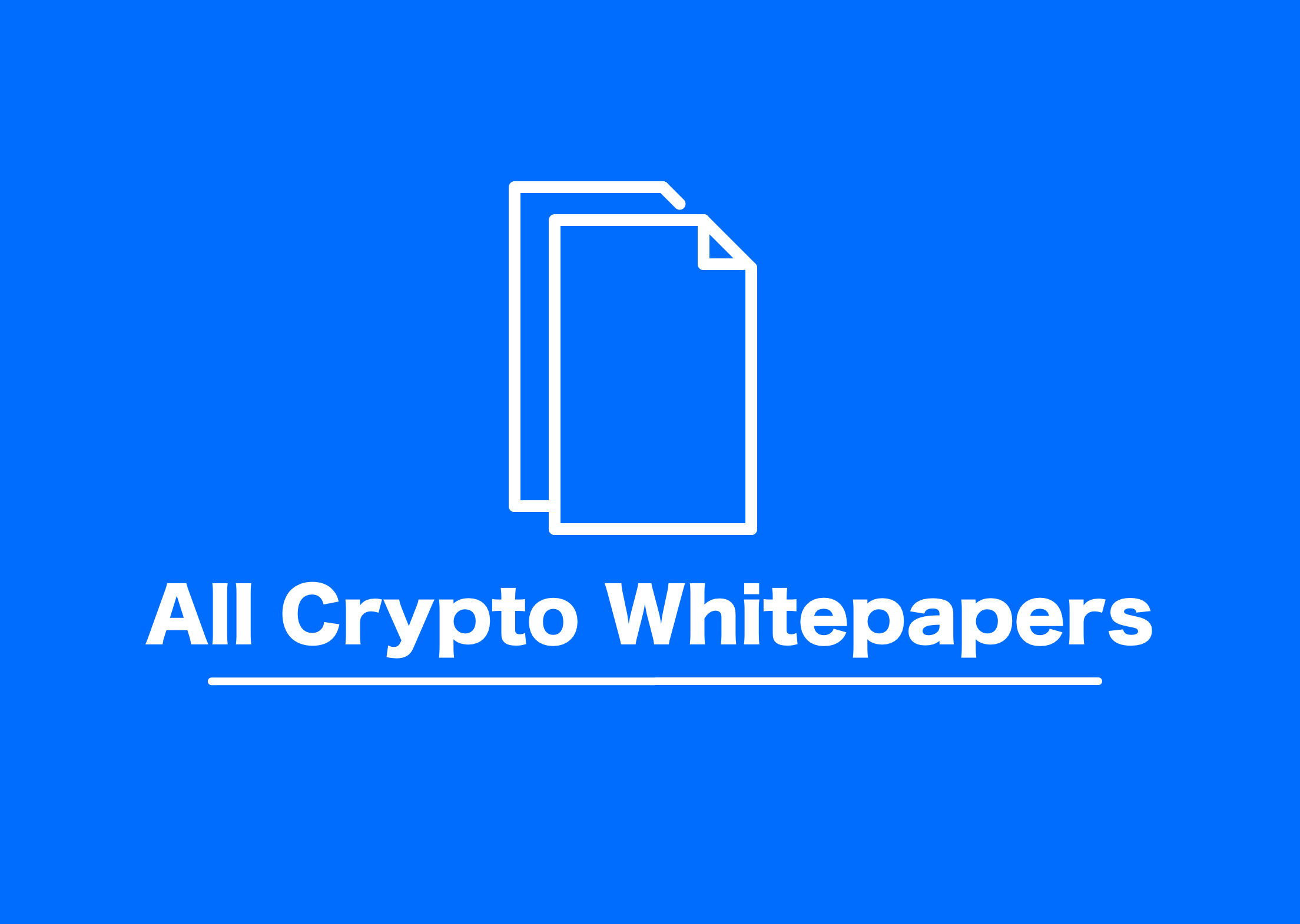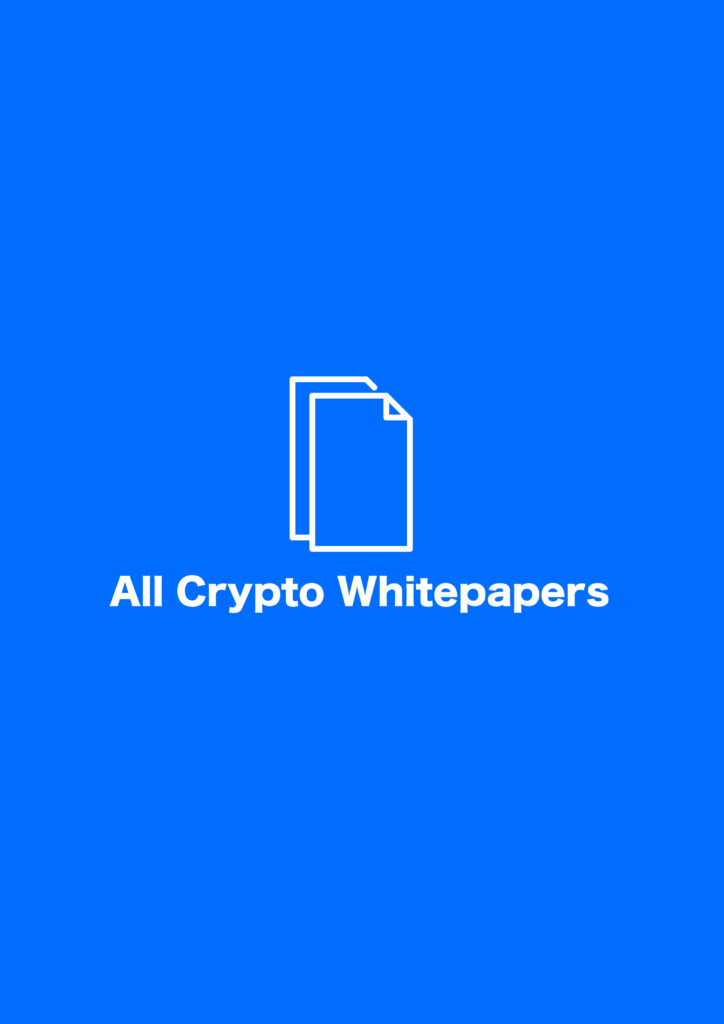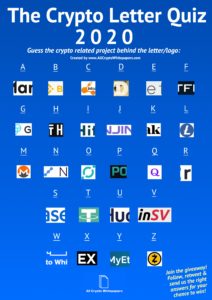Every year we do a quick run-up of the most read cryptocurrency whitepapers on our site. This year we’ve got the top 15 crypto white papers for you! We’ve excluded the popular pages of projects that do not have a whitepaper (looking at you Litecoin & Dogecoin!). Among the other most visited pages were our recap of China’s DCEP plans and,(obviously!) our cryptocurrency research guides.
Below you will find which whitepapers were read the most on out site in 2020! This year we’ve got Chainlink taking over the first place from Bitcoin and Monero, Digibyte, EOS and Dashcoin entering the top 10. So, if you want to make sure that you’re not missing out on the next big thing, make sure to read the whitepapers below!
1. Chainlink Whitepaper
ChainLink is blockchain middleware that allows smart contracts to access key off-chain resources like data feeds, various web APIs, and traditional bank account payments.
By providing smart contracts secure access to these key resources, ChainLink allows them to mimic real world agreements that require external proof of performance and need to make payment in widely available payment methods e.g. bank payments.
Read more here: Chainlink Whitepaper
2. Bitcoin Whitepaper
The Bitcoin white paper has been written by Satoshi Nakamoto, the anonymous bitcoin creator who created the decentralized Bitcoin Network. The blockchain technology he describes in this article is not new, but using the combination of blockchain, cryptocurrency and proof of work resulted in the largest cryptocurrency that is still dominating the cryptocurrency market today. The amount of Bitcoin transactions are very high and bitcoin mining still is very profitable if you have access to cheap electricity and enough computing power. The amount if bitcoin wallets and bitcoin transactions is rising fast and almost everyone who is in the cryptocurrency industry has at least a few Satoshi as one of their crypto assets. The price of Bitcoin (BTC) is always an important factor of cryptocurrency news and people are always trying to predict the right price on social media, such as Twitter. If you are thinking about mining or buying bitcoin, you should definitely read the Bitcoin Whitepaper first and learn about Bitcoin and cryptocurrency:
Read more here: Bitcoin Whitepaper
3. Monero Whitepaper
Monero is cash for a connected world. It’s fast, private, and secure. With Monero, you are your own bank. You can spend safely, knowing that others cannot see your balances or track your activity.
Read more here: Monero Whitepaper
4. TrueUSD whitepaper
TrueUSD is a USD-backed ERC20 stablecoin that is fully collateralized, legally protected, and transparently verified by third-party attestations. TrueUSD uses multiple escrow accounts to reduce counterparty risk, and to provide token-holders with legal protections against misappropriation. TrueUSD is the first asset token built on the TrustToken platform.
Read more here: TrueUSD whitepaper
5. Ripple whitepaper
The Ripple Network is a network for global financial transactions. Ripple has been created in 2012 by Ripple Labs Inc. and their mission is to enable banks to transfer money to each other in a faster and more secure way. To enable these fast transactions Ripple has created the cryptocurrency XRP, which runs on the Riiple blockchain, called thethe Ripple Consensus Protocol Ledger (XRPL). The XRPL works as a distributed economic system that not only tracks transactions and accounting information, but also offers exchange services for a large number of currency pairs. Ripple presents the XRPL as an open source distributed ledger that can process financial transactions in real time. These transactions are secured and verified by the network participants and a consensus mechanism.
Read more here: Ripple whitepaper
6. Ethereum whitepaper
Everybody knows what Ethereum is these days, but have you read the whitepaper itself? The introduction is pretty smart:
Satoshi Nakamoto’s development of Bitcoin in 2009 has often been hailed as a radical development in money and currency, being the first example of a digital asset which simultaneously has no backing or intrinsic value and no centralized issuer or controller. However, another – arguably more important – part of the Bitcoin experiment is the underlying blockchain technology as a tool of distributed consensus, and attention is rapidly starting to shift to this other aspect of Bitcoin.
Commonly cited alternative applications of blockchain technology include using on-blockchain digital assets to represent custom currencies and financial instruments (colored coins), the ownership of an underlying physical device (smart property), non-fungible assets such as domain names (Namecoin), as well as more complex applications involving having digital assets being directly controlled by a piece of code implementing arbitrary rules (smart contracts) or even blockchain-based decentralized autonomous organizations (DAOs).
What Ethereum intends to provide is a blockchain with a built-in fully fledged Turing-complete programming language that can be used to create “contracts” that can be used to encode arbitrary state transition functions, allowing users to create any of the systems described above, as well as many others that we have not yet imagined, simply by writing up the logic in a few lines of code.
Read more here: Ethereum whitepaper
7. Binance Whitepaper
The Binance Whitepaper is such an amazing read! The content is not that special or groundbreaking, but when you read it an take into account what they have accomplished in just a few years is really impressive. The whitepaper was just the beginning!
Read more here: Binance Whitepaper
8. Digibyte whitepaper
DigiByte is a public, rapidly growing and highly decentralized blockchain. DigiBytes are digital assets that cannot be destroyed, counterfeited or hacked, making them ideal for protecting objects of value like currency, information, property or important digital data.
DigiBytes can be sent over the DigiByte Blockchain and forever recorded on an immutable public ledger that is decentralized on thousands of computers across the planet.
Read more here: Digibyte whitepaper
9. EOS whitepaper
The EOS.IO software introduces a new blockchain architecture designed to enable vertical and horizontal scaling of decentralized applications. This is achieved by creating an operating system-like construct upon which applications can be built. The software provides accounts, authentication, databases, asynchronous communication, and the scheduling of applications across many of CPU cores or clusters. The resulting technology is a blockchain architecture that may ultimately scale to millions of transactions per second, eliminates user fees, and allows for quick and easy deployment and maintenance of decentralized applications, in the context of a governed blockchain.
Read more here: EOS whitepaper
10. Dash Whitepaper
Dash is the first privacy-centric cryptographic currency based on the work of Satoshi Nakamoto. In this paper we propose a series of improvements to Bitcoin resulting in a decentralized, strongly anonymous crypto-currency, with tamper-proof instant transactions and a secondary peer-to-peer (P2P) network incentivized to provide services to the Dash Network.
Read more here: Dash Whitepaper
11. Nash Exchange token whitepaper
In 2017, Nash was founded by five open-source blockchain developers on three different continents. Originally known as the Neon Exchange (NEX), we set the goal of developing a decentralized platform that could equal, even surpass, the speed and functionality of traditional financial services.
Read more here: Nash Exchange token whitepaper
12. Cosmos Whitepaper
Cosmos is a network of many independent blockchains, called zones. The zones are powered by Tendermint Core, which provides a high-performance, consistent, secure PBFT-like consensus engine, where strict fork-accountability guarantees hold over the behaviour of malicious actors. Tendermint Core’s BFT consensus algorithm is well suited for scaling public proof-of-stake blockchains.
The first zone on Cosmos is called the Cosmos Hub. The Cosmos Hub is a multi-asset proof-of-stake cryptocurrency with a simple governance mechanism which enables the network to adapt and upgrade. In addition, the Cosmos Hub can be extended by connecting other zones.
The hub and zones of the Cosmos network communicate with each other via an inter-blockchain communication (IBC) protocol, a kind of virtual UDP or TCP for blockchains. Tokens can be transferred from one zone to another securely and quickly without the need for exchange liquidity between zones. Instead, all inter-zone token transfers go through the Cosmos Hub, which keeps track of the total amount of tokens held by each zone. The hub isolates each zone from the failure of other zones. Because anyone can connect a new zone to the Cosmos Hub, zones allow for future-compatibility with new blockchain innovations.
Read more here: Cosmos Whitepaper
13. Ampleforth whitepaper
Synthetic commodities, such as Bitcoin, have thus far demonstrated low correlation with stocks, currencies, and precious metals. However, today’s synthetics are also highly correlated with each other and with Bitcoin. The natural question to ask is: can a synthetic commodity have low correlation with both Bitcoin and traditional asset groups?
Read more here: Ampleforth whitepaper
14. Electroneum whitepaper
Where previously cryptocurrency usage has been almost entirely the domain of speculators and the tech-savvy, Electroneum is set to become the first digital coin to enter common usage due to its groundbreaking ease-of-use for the ordinary mobile user.
Read more here: Electroneum whitepaper
15. Celsius whitepaper
Unbank Yourself is the motto of Celsius. Or as they put it themselves: An economy where financial freedom doesn’t come with a price tag. Where the interests of the people are put first. Where ethical behavior is the baseline, and where everyone – and we mean everyone – has the opportunity to succeed financially. With a little bit of humanity and honesty, and the power of a digital currency that’s as strong as it is accessible, we’re ushering in the new economy today. Their goal is to disrupt the financial industry by providing a platform of curated services with fair interest, zero fees, and lightning quick transactions
Read more here: Celsius whitepaper
If you are looking for a different whitepaper, our white paper overview has 3000+ ICO, STO and DeFi whitepapers. Learn more about doing your (whitepaper) research here and don’t forget to check out our Cryptocurrency News section! You can also buy our entire database of 3000 whitepaper PDF’s for your research or let us promote your whitepaper as our Whitepaper of the Week!
![]()









